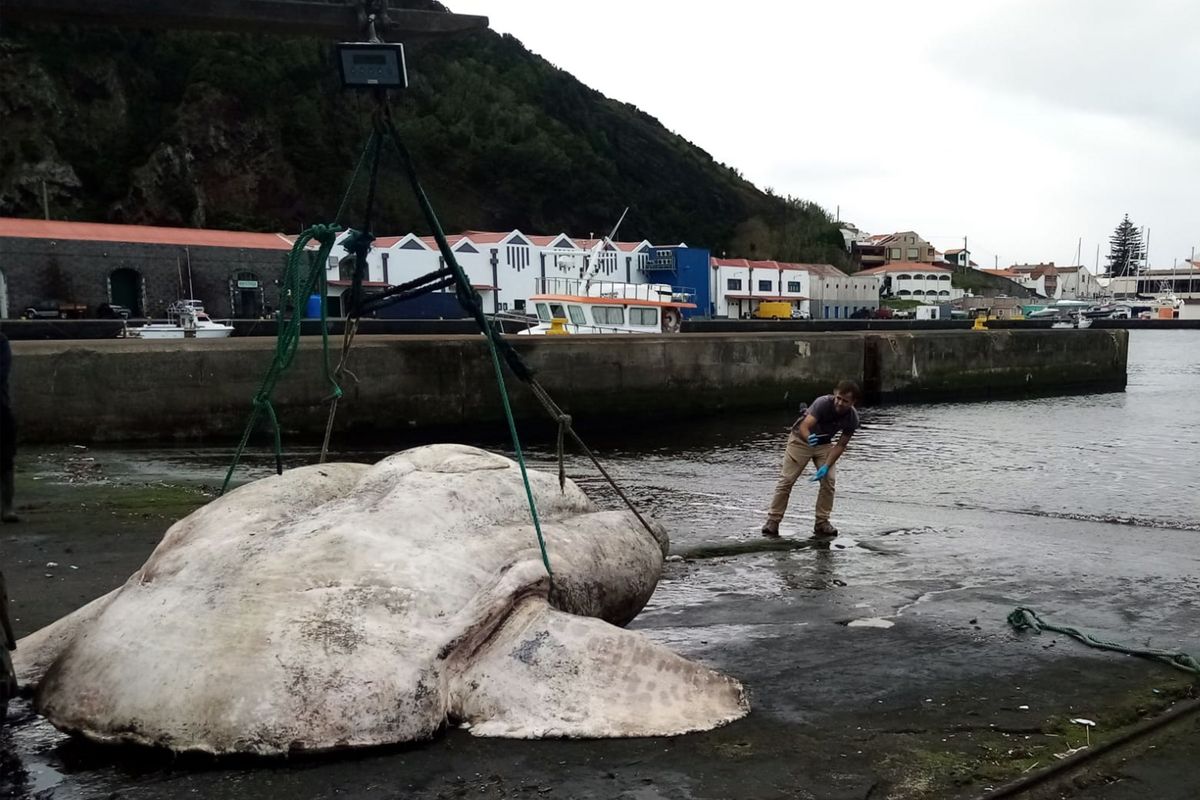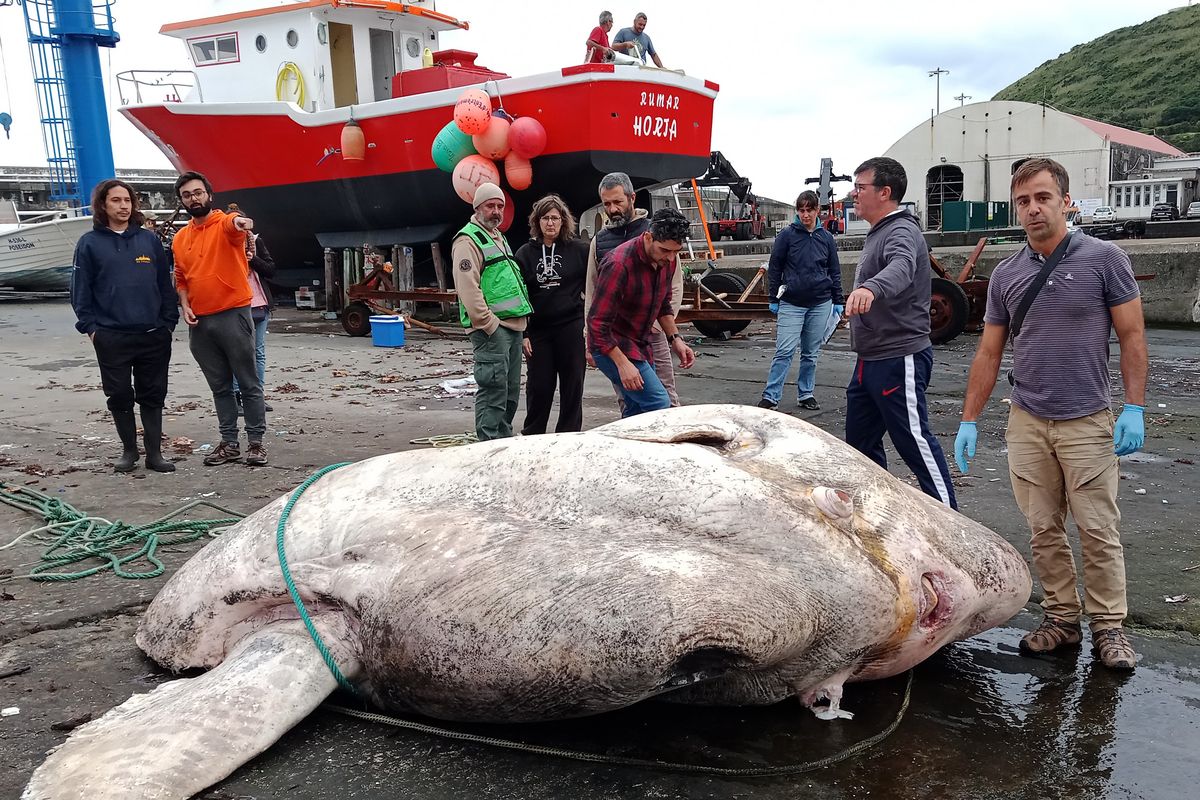Not Just a Big Fish, but Perhaps the Biggest Bony Fish Ever
In an undated image provided by Atlantic Naturalist, researchers with a giant sunfish at the marina in Horta in Portugal’s Azores archipelago in December 2021. (ATLANTIC NATURALIST)
It was easy for scientists to have doubts when they were told that the carcass of a colossal fish had been found floating just off the coast of Faial Island in Portugal’s Azores archipelago in the mid-Atlantic Ocean in December 2021. People do tend to exaggerate when it comes to the size of fish, after all. However, their skepticism lifted the moment they laid eyes on the fish. It was the biggest bony fish they had ever seen. In fact, it might have been the biggest anyone had ever seen.
Weighing just over 6,000 pounds, which is around the weight of a Chevrolet Suburban, and stretching more than 10 feet in length, the scientists say the supersize southern sunfish, a species of mola, was the heaviest bony fish ever recorded.
More than 90% of fish have bony skeletons and thus fall into the category of bony fish. This sets them apart from sharks, rays and some fish that have cartilaginous skeletons. Although no bony fish has ever come close to reaching the size of a whale shark, the largest cartilaginous fish, the size of the sunfish found in the Azores is impressive.
“It’s pretty rare to find big fish these days due to overfishing and habitat degradation,” said Kory Evans, a fish ecologist at Rice University who was not involved in the discovery of the SUV-size sunfish.
The last bony fish recorded anywhere near that size was a female of the same species caught in Japan in 1996 that weighed around 5,070 pounds and measured roughly 8.9 feet across.
The massive southern sunfish found in the Azores is “not an abnormal individual whose extreme size is due to a genetic mutation,” said José Nuno Gomes-Pereira, a marine biologist with Atlantic Naturalist and co-author of a study published this month in Journal of Fish Biology that documented the specimen. “This species can get to this size. We just finally managed to weigh and measure one. There are more of these monsters out there.”
Aside from their size, molas are known for their clumsy swimming style. Unlike most fish, molas use their dorsal and anal fins to propel their huge, hulking bodies through the water, which they do slowly and haphazardly. The open-ocean fish are often seen floating on their sides at the sea’s surface, which scientists think is to warm up or to make it easy for seabirds to make a meal of the parasites on their skin.
After local fishermen and boaters found the southern sunfish floating near the Azores, a group of scientists from the research nonprofit Atlantic Naturalist and the local marine wildlife authorities towed its body into Horta Harbor and hoisted it onto land using a forklift.
Gomes-Pereira and his colleagues spent several hours measuring the length, weight and stomach contents of the fish. The mola’s nearly 8-inch thick skin made the dissection particularly tricky. And because the fish was too large for any local museum to preserve, it was buried on a nearby hillside.
The scientists weren’t able to determine the exact age of the fish, but Gomes-Pereira believes the creature was at least two decades old. Estimates suggest that is around the limit of their life span, but no one really knows how long these animals can live.
This particular fish’s life may have been cut short. While examining the fish, Gomes-Pereira noticed a large contusion on the side of the animal’s head. That could be a sign that the fish was hit by a boat. The scientists believe the boaters in the Azores need to slow down and be more mindful of their effect on ocean wildlife.
At the same time, Gomes-Pereira hopes that the discovery of this fish shows people that the ocean is still healthy enough to support the largest animals on the planet, as well as inspire them to do more to protect it. “It’s a warning for us in terms of the need for further conservation measures,” he said.


